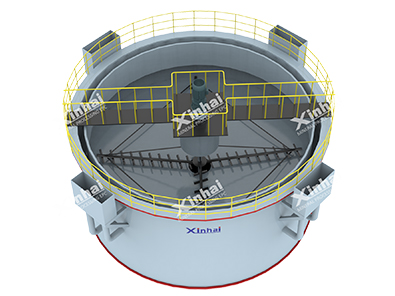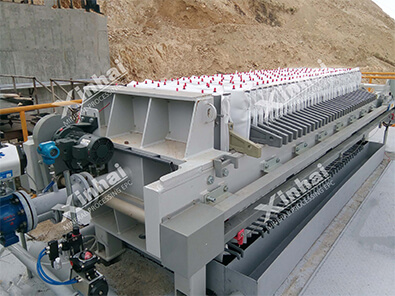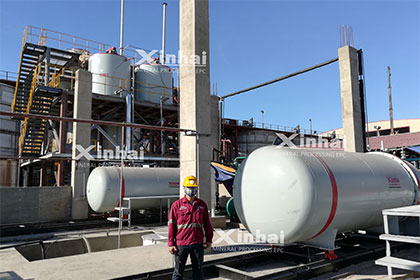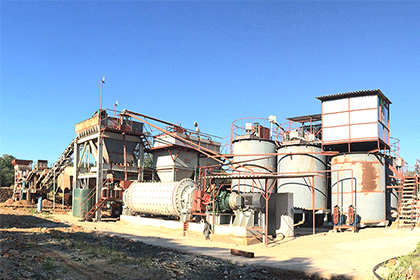Gold Leaching Explained: From Ore to Pure Gold
 Laura
Laura
 Sep 15, 2024
Sep 15, 2024
 5400
5400
If you want to know more details about equipment, solutions, etc, please click the button below for free consultation, or leave your requirements!
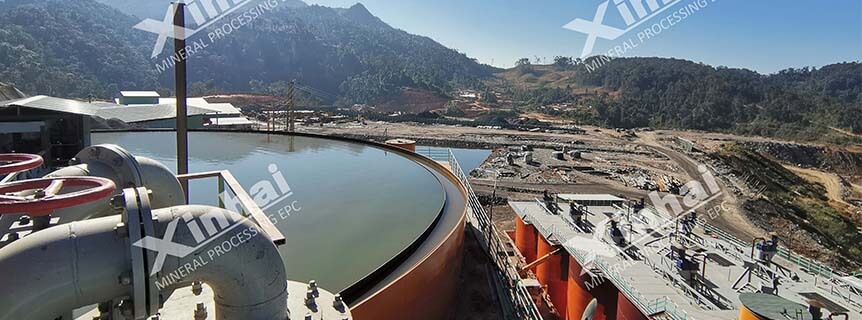
Laos 2000tpd gold processing plant project site
Gold, often termed as the "king of metals," has captivated humanity for centuries. Its lustrous appearance, rarity, and intrinsic value have made it a symbol of wealth and a significant player in the world economy. However, the journey from gold ore to pure gold is a complex and fascinating process that involves several stages, one of the most critical being leaching. In this blog post, we will delve into the science and techniques of gold leaching, exploring how this process transforms raw ore into refined gold.
01 What is Gold Leaching?
BackGold leaching is a hydrometallurgical process used to extract gold from its ore. Unlike traditional mining methods, which often rely on physical extraction techniques, leaching involves the use of chemical solvents to dissolve gold from the ore. This process is particularly useful for low-grade ores, where the concentration of gold is not high enough to justify conventional extraction methods.
The leaching process can be broken down into several stages, including crushing and grinding, chemical treatment, and recovery. Each of these stages plays a crucial role in ensuring maximum gold extraction.
02 The Gold Leaching Process
Back1. Crushing and Grinding
The first step in the gold leaching process is the preparation of the ore. This involves crushing and grinding the ore to liberate the gold particles from the surrounding rock. The goal is to create a fine powder that increases the surface area of the gold, making it more accessible for chemical treatment.
Crushing: The ore is initially broken down into smaller pieces using crushers. This can involve multiple stages of crushing, depending on the hardness and size of the ore.
Grinding: Once crushed, the ore is further reduced in size using grinding mills. The grinding process often employs ball mills or rod mills, which use steel balls or rods to grind the ore into a fine powder, usually to a size of 50 to 100 microns.
2. Chemical Treatment
After the ore has been finely ground, it is subjected to a chemical treatment process. This step is where the actual leaching occurs, and it typically involves the use of cyanide, a highly effective solvent for gold extraction.
1). Cyanide Leaching
Cyanide leaching is the most commonly used method for gold extraction due to its efficiency and effectiveness. The process involves the following steps:
Preparation of Cyanide Solution: A solution of sodium cyanide (NaCN) is prepared and mixed with water. This solution is highly toxic and must be handled with extreme care.
Leaching: The finely ground ore is mixed with the cyanide solution in large tanks. The cyanide ions react with the gold in the ore to form a soluble gold-cyanide complex, known as [Au(CN)2]−. This reaction allows the gold to dissolve into the solution while leaving behind the waste material.
Duration: The leaching process can take several hours to days, depending on factors such as temperature, pH, and the concentration of cyanide. The optimal conditions for leaching must be carefully monitored to maximize gold recovery.
2). Alternative Leaching Methods
While cyanide leaching is the most prevalent method, there are alternative approaches that can be employed, especially in cases where environmental concerns dictate the need for safer options:
Thiosulfate Leaching: This method uses thiosulfate ions to dissolve gold from the ore. It is considered less toxic than cyanide and can be effective for certain types of ores.
Chlorine Leaching: Chlorine gas can also be used to extract gold. This method is more common in situations where the ore contains significant amounts of silver, which can complicate cyanide leaching.
Bioleaching: This innovative approach uses microorganisms to facilitate the leaching process. Certain bacteria can oxidize sulfide minerals, releasing gold in the process. Bioleaching is an environmentally friendly alternative but is still under research and development for commercial applications.
(Learn more about alternative leaching solution)
3. Separation and Recovery
Once the gold has been leached into the solution, the next step is to separate it from the remaining waste material. This can be accomplished through several methods:
1). Carbon Adsorption
One of the most popular methods for recovering gold from cyanide solutions is carbon adsorption, commonly known as the Carbon-in-Pulp (CIP) or Carbon-in-Leach (CIL) processes. Here’s how it works:
Activated Carbon: The leach solution is passed through a series of tanks containing activated carbon. The carbon has a high surface area and is capable of adsorbing the gold-cyanide complex from the solution.
Gold Recovery: After the gold has been adsorbed onto the carbon, it is removed from the solution. The carbon can be treated with a hot caustic solution to strip the gold from the carbon, which is then collected for further processing.
2). Electrowinning
Another method for recovering gold from the leach solution is electrowinning. This process involves the following steps:
Electrolysis: The leach solution is subjected to an electric current, which causes the gold ions to be deposited onto cathodes (usually made of stainless steel or lead).
Gold Recovery: The deposited gold can then be removed from the cathodes and further processed to achieve the desired purity.
4. Refining
The final step in the gold production process is refining. The gold recovered from the leaching and separation processes may contain impurities, and refining is necessary to achieve the desired purity level, typically 99.99%.
1). Smelting
Process: The recovered gold is mixed with fluxes (such as borax and soda ash) and heated in a furnace. The fluxes help to separate impurities from the gold, allowing for a purer product.
Result: The result is a molten gold that can be poured into molds to create gold bars or ingots.
2). Chemical Refining
In some cases, chemical processes may be used to further purify gold. This can involve the use of aqua regia (a mixture of hydrochloric and nitric acids) or other chemical agents to dissolve impurities and recover pure gold.
03 Environmental Considerations
BackWhile gold leaching is an effective method for extracting gold from ore, it is not without its environmental concerns. The use of cyanide, in particular, has raised alarms regarding potential spills and contamination of water sources. As a result, the gold mining industry has been actively working to implement more sustainable practices.
1. Cyanide Management
To mitigate the risks associated with cyanide use, mining companies are adopting best practices such as:
Cyanide Destruction: After the leaching process, residual cyanide can be treated using processes like the INCO process or sulfur dioxide oxidation to render it harmless before disposal.
Monitoring and Reporting: Continuous monitoring of cyanide levels in the environment is essential to ensure that any leaks or spills are promptly addressed.
2. Alternative Practices
As mentioned earlier, alternative leaching methods such as thiosulfate leaching and bioleaching are being explored as potential substitutes for cyanide. These methods may offer more environmentally friendly options for gold extraction, although they may not yet be as widely adopted.
04Conclusion
BackGold leaching is a sophisticated process that transforms raw ore into pure gold through a series of chemical and physical steps. From crushing and grinding the ore to leaching with cyanide, followed by separation and refining, each stage is vital to ensure maximum gold recovery. As the demand for gold continues to rise, the industry faces the challenge of balancing effective extraction methods with environmental responsibility.
By embracing innovative techniques and sustainable practices, the gold mining industry can continue to thrive while minimizing its impact on the environment. As we move forward, the exploration of alternative leaching methods and improvements in cyanide management will play a crucial role in shaping the future of gold extraction, ensuring that this precious metal remains a cornerstone of our economy and culture for generations to come.
In summary, understanding the gold leaching process not only sheds light on how this precious metal is obtained, but it also emphasizes the importance of responsible mining practices in an era where environmental stewardship is paramount.
Feel free to contact us and learn more about factors affecting gold leaching effects! Or maybe you can leave a message and we will reply to you soon.
 +86 18234403483
+86 18234403483 yanzhang19990421@gmail.com
yanzhang19990421@gmail.com




 Message
Message Chat Now
Chat Now



